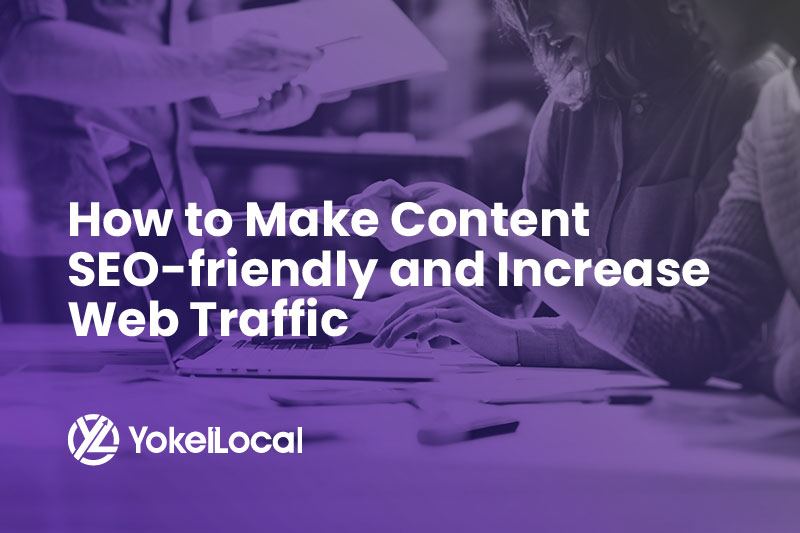When inspiration strikes, it usually comes as a vision - not as a string of keywords that don’t even form a complete sentence. Until recently, if you were shopping online, looking for a particular restaurant, or trying to identify a landmark, you had to use words to find what you were looking for. However, search engine technology is finally catching up with how our brains work, with visual search allowing us to conduct purely image-based searches. What does the rise of the image-based visual search mean for your site’s text-based SEO?
What Is Visual Search?
Visual search is built on the premise that it’s easier to find the dress you saw on the street with a picture of it than it is with words to describe it. Visual search uses machine learning and computer vision to identify objects in your image and then return other images that include those objects or similar ones. Instead of trying to think of the right words to describe that dress, the odd statue nearby, or the funky shop with no name you just passed, you can just use a picture of each to find out what they are. Thus, visual search has major implications for online shopping and your site’s SEO.
Most SEO practices rely on changing text somewhere on your site, such as the keywords on a page. Visual search raises the importance of image optimization, which is often neglected in SEO strategies. But visual search can also improve your site’s non-visual SEO metrics as it brings in more visitors who spend a longer amount of time on your site. Visual search marketing is set to revolutionize how customers buy online and interact with brands, making it vital to become an early adopter to capitalize on the potential gains.
Where to Find Visual Search Engines
Visual search is still a new technology, but the following businesses are already making use of them on their websites and platforms:
- Pinterest Lens
- Google Lens
- Bing Visual Search
- Amazon
- Snapchat
- eBay
- Wal-Mart
- ASOS
- Wayfair
- Macy’s
- Levi Strauss & Co.
- Disney
- Lush
- Ikea
- Estée Lauder
- Sephora
- And many more
Visual search is seeing early adoption in the home decor, cosmetics, and fashion industries, but companies are only beginning to tap into its potential. As visual search technology matures, it may leave no industry untouched, given its ease of use, utility, and convenience.
Tips to Optimize Your Site for Visual Search Marketing
Just like your site’s text content, there are some SEO rules of thumb you should follow for optimizing your images. Even if you aren’t planning on introducing visual search soon, improving your site’s SEO for images can raise its overall rankings and enhance user experience, setting off a virtuous cycle that brings in more visitors and further lifts your site’s rankings.
File Names and Alt Tags
File names and alt tags are your chance to tell search engines and visitors to your site what an image is. Use appropriate keywords to describe images in file names, which are read by search engines, and in alt tags, which will display when an image is not available or when a viewer is using a screen reader. Websites are rewarded when they use original images with keywords that accurately describe them. But don’t use this as an opportunity to keyword stuff, otherwise your site will get penalized.
Image Captions
Image captions provide more context to an image, especially if they contain relevant keywords but aren’t stuffed with them. The more relevant, engaging content your page has, the better chance it has to rank for what you want it to.
Images in the Sitemap
A sitemap is akin to a blueprint for your site that shows how each component, whether it’s a blog, a page, or a piece of media, relates to the others. There are two types of sitemaps: a Hypertext Markup Language (HTML) and an Extensible Markup Language (XML), which are built for humans and search engines, respectively. By adding your images to an XML sitemap, Google can actually index your images and make it easier for others to find your site in a search.
Image Variety
Increasing the number of images on your website will not only be good for SEO, but it’ll also appeal to your website visitors. Use high-quality, unique images (as opposed to stock images) on as many web pages as possible, if not all of them. Be sure to include images of all of your business’s products and services on your website, and update old, low-quality, or out-of-date images.
Social Media
Social media is in many ways the perfect gateway to visual search. Social media is overflowing with images, any of which can serve as inspiration for purchase decisions. When a user sees your image, they can click on it and be led to your site to be shown other pictures of the same, similar, and complementary products. With a dedicated visual search marketing strategy, you can even target your ideal audience on the social media platforms they use.
Can Your Consumers Use Visual Search to Find Your Business?
Visual search is only now coming into use among the broader public, giving businesses that adopt it now a chance to pull ahead of late-coming competitors. With just a snapshot of your storefront, logo, or the type of product you sell, your business could show up in a visual search made by someone ready to buy. With 70 percent of millennial and Gen Z consumers reporting that they would increase online purchases with more access to shoppable digital content, businesses that adopt visual search today stand to make lasting gains tomorrow. If you need assistance with implementing visual search optimization or other internet marketing strategies for your business, contact Yokel Local today!
Transform your digital presence with Yokel Local today! Discover tailored marketing strategies that drive real results. Contact Us Now and start growing your business online.














